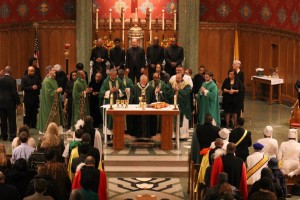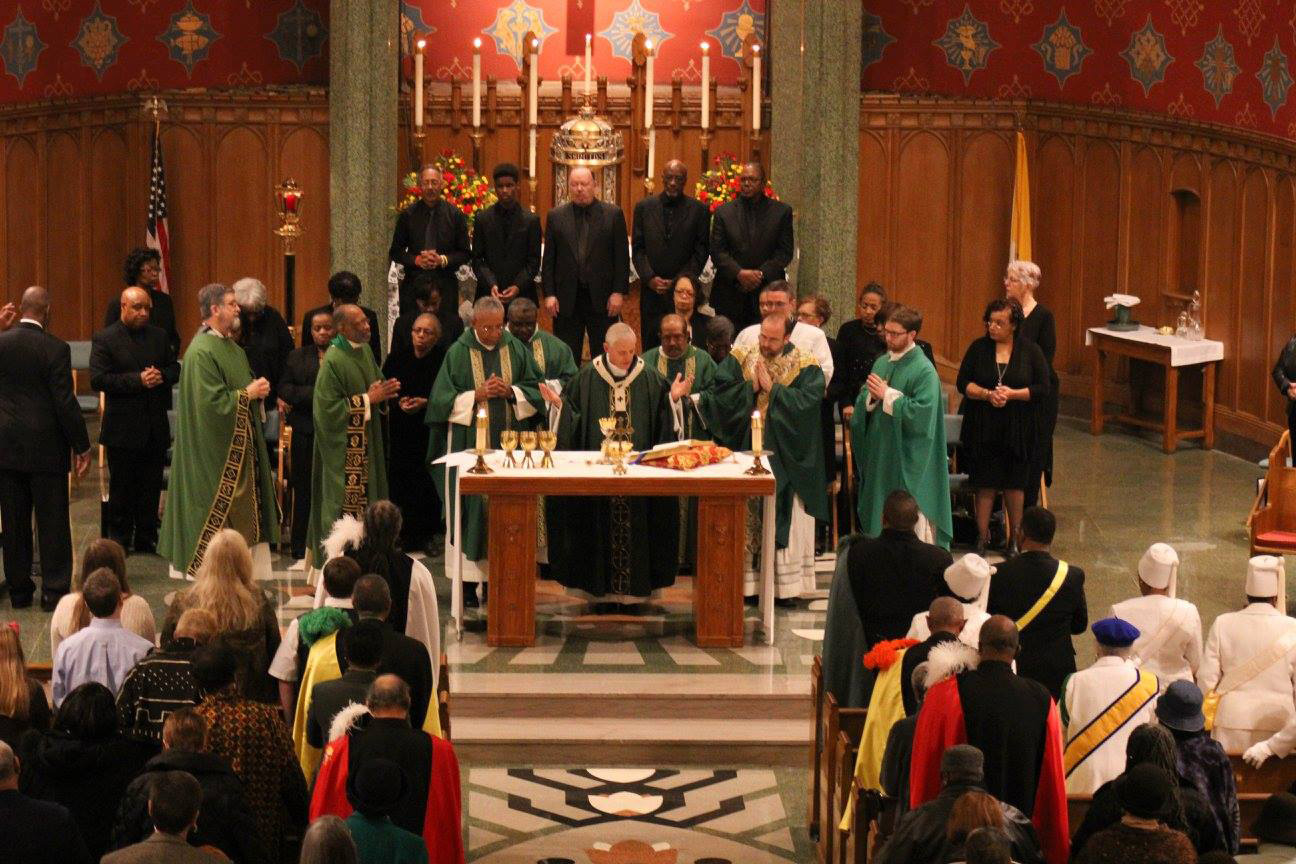 In the realm of liturgy there is often heard the voice of “historicists” who like to explain why something began in the liturgy historically. Usually their purpose for this is to say that it is silly to keep doing it today. But of course this logic is flawed, since even things that began for a practical reason usually take on additional meaning over time that ought not be discarded. Here are a few examples:
In the realm of liturgy there is often heard the voice of “historicists” who like to explain why something began in the liturgy historically. Usually their purpose for this is to say that it is silly to keep doing it today. But of course this logic is flawed, since even things that began for a practical reason usually take on additional meaning over time that ought not be discarded. Here are a few examples:
1. The ringing of the bells at the Sanctus, at the Hanc igitur, at the elevation of the host and chalice, and at the priest’s communion is said to have begun as a signal to the people, who were often not very engaged in what was going on “way up there at the high altar.” Maybe they were saying personal prayers or lighting candles. And thus, at important moments, the bells were rung to signal them that something important was about to happen. “Pay attention” was the meaning of the bells. And historicists today say, “Lose the bells,” since the people are deeply engaged now and have no need of signals. Of course they forget that the bells also came to indicate “the holy” and were not “just” a signal. Failing to ring them took away some of the aura of the holy, since bells were not “just” a signal.
2. It is said that incense was used mainly to cover up the bad smell of burning animal flesh in the Old Testament (it was not). And in churches of the New Testament era, where people did not bathe much (actually they bathed more than we think), body odor had to be covered up. Thus today many say, “Lose the incense,” since most people bathe and buildings are better ventilated. But again, they forget that incense is more than perfume; it is a symbol of prayer (cf Ps 141) and, once again, signifies the holy to God’s people.
3. It is said that the mixing of water with wine was an ancient practice since wine was “mixed” in those days. But today, wine is already filtered and mixed and we don’t need to mix it, so “Lose the ritual,” they say. But they do not understand that it has more significance than a mere practical gesture. For the prayer clearly indicates it is a symbol of our becoming one with Christ.
4. It is said that offertory processions were once a messy affair with all sorts of things being brought up in the procession such as crops, and even animals, the handling of which soiled the priest’s hands. Today only bread and wine are brought up so, “Lose the hand washing,” they say. But again the prayer goes beyond its practical roots (for which it is no longer needed) and speaks to a cleansing from sin that is still needed.
So you see that what once began as a practical measure often took on a spiritual meaning as well. A merely historicist understanding often neglects later developments.
Somehow I thought of this when I watched this video. It playfully posits that “half-time” in football games began with the chance appearance of a few beautiful women with some Pepsi-Cola. But whatever half-time’s “practical” origin really was, it has become a lot more since then, especially at the Superbowl and at college games, where entertainment is supplied and people (fans AND players) recharge and prepare for what is to come. It also introduces tension into close games and makes us wait for the outcome.
If it had a practical origin, it is part of the ritual now. Even if we ended up replacing the players with robots or virtual holographic players who need no rest, I suspect that half-time would still be part of the game. Why? Because most things never exist just for themselves, and neither do most things fully explain themselves. There’s always more to the story than mere practicality.
As it is for football, a fortiori the Mass. Every now and again it makes sense to let a few things fall away, but otherwise, may ritual remain reverently revered! There’s more to the story than mere practicality.


EXCELLENT!!
What a good article! These kind of historians just want to make a name for themselves and they can do great harm to the Church if we are not aware of it’s dangers. Therefore I think it is important to personnally inform our priests about how much we like and appreceate our Church’s traditions, that we want to keep them or if it’s the case, tell them how much we miss them. At the beginning of this year would be a great time to do so. These traditions are to be preserved and cherissed not just for our own sake but especially for the glory of God. They add so much reverance and solemnity to the mass. Yes, I like the processions, the candles, I like the altar being insenced along with the priest, the servants and all the faithful present at the mass, I like the priest kissing the altar, I like the bells. the priest`s benediction . All this I like and more also. Thank you for this article and may we be aware of the richness and beauty of our traditions so full of very powerful symbols which are an extention of our offering and prayer.
My parish priest recently referred to the Stations of Cross and Benediction as old Catholic rituals. He stated that many in the church never experienced these rituals and this is their chance . Truthfully, I was a little shocked. Funny, I always held that rituals were performed for ugly women stirring cauldrons whereby Benediction, for example, was devout adoration and blessing. Perception really impacts belief, doesn’t it.
Thank goodness they didn’t say “we have tea!” or we’d be watching cricket right now.
I agree with the above, Monsignor! How I miss the altar rail and everyone KNEELING for Communion and the priest placing the Body, Blood, Soul and Divinity of Christ on one’s tongue with a paten under my chin to capture even the most minute particle! I believe it was Gandhi who once said that if Catholics truly believed in the “real presence” of Christ in the Eucharist, we’d crawl on our hands and knees to Communion…
Pax tecum!
During the Procession of the Shroud on Good Friday (in the Byzantine Cahtolic Rite) the symbolic shroud is approached, by the faithful, on foot until a few steps away. Then each will descend to their knees and crawl up to the shroud in and upright psoition where the wounds on the Picture of Christ are kissed and the participant moves aside and away.
Not saying that one Rite is more or less than another but, each has distinctive qualities.
I say keep all of the rituals mentioned in the article. My one question is, how did it come to pass that there would have been so many people not paying attention at Mass, that the ringing of bells was necessary to get their attention?